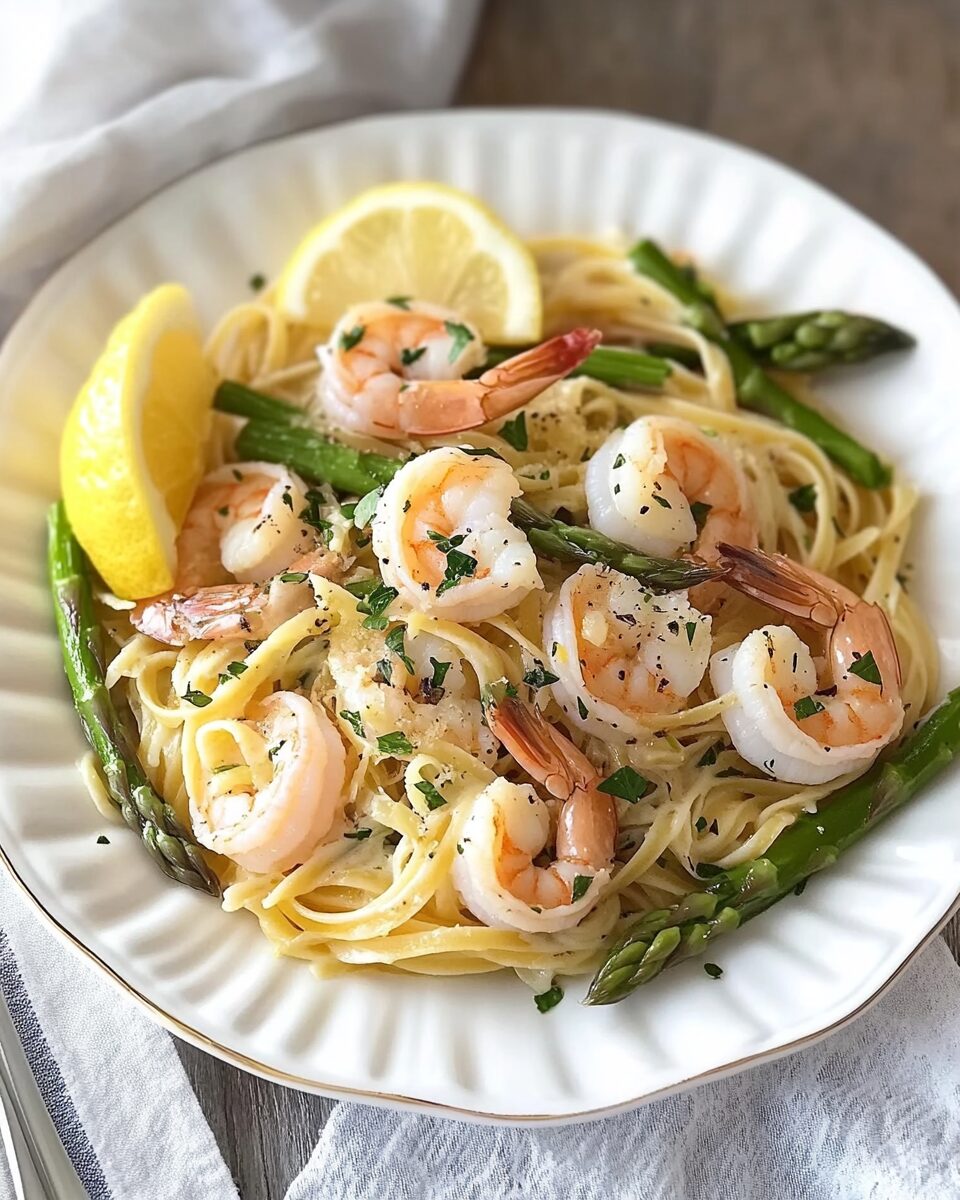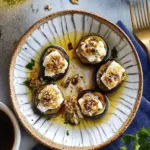Why This Recipe Works
This pasta dish is a smart example of technique-driven cooking that doesn’t rely on complexity. By leveraging a few essential principles, it transforms a handful of ingredients into something really special:
Pasta finishes in the sauce, not the pot—this method ensures the noodles absorb flavor and the sauce clings to each strand instead of sitting at the bottom of the plate.
Shrimp is cooked quickly at high heat so it stays juicy and tender. Overcooked shrimp becomes rubbery fast, but this recipe gives you a perfect cook every time.
Asparagus is added with the shrimp, so it softens slightly but still holds its vibrant color and tender-crisp texture.
Lemon juice and white wine provide brightness and acid, balancing out the natural richness of the butter and olive oil.
Pasta water is reserved and used to finish the sauce, helping it thicken and bind with the starches naturally released from the pasta.
By following this method, you get a dish that tastes like it came from a fine dining kitchen—without the extra time or effort.
Flavor and Texture Highlights
This shrimp and asparagus pasta is layered with fresh, savory, and citrusy flavors, and the textures range from silky pasta to crisp-tender asparagus and plump, perfectly seared shrimp. Here’s what stands out:
Shrimp adds a mildly sweet, meaty bite that’s satisfying and light
Asparagus delivers crunch, earthiness, and a fresh vegetal flavor that defines springtime cooking
Lemon and white wine infuse the sauce with zing and elegance, keeping the dish bright and clean
Butter smooths everything out and adds richness without heaviness
Parmesan cheese adds that final layer of salty, umami depth that finishes the dish perfectly
The combination of juicy seafood, green spring vegetables, and twirly noodles all bathed in a light sauce creates an experience that’s both comforting and refined.
Tips for Best Results
Use medium-large shrimp (such as 21/25 count) so they’re easy to cook evenly and provide substantial bites. You can use peeled and deveined shrimp, either fresh or frozen (thawed if frozen).
Trim the tough ends off the asparagus before slicing into bite-sized pieces. If your asparagus is on the thicker side, you can peel the lower third to ensure tenderness.
Cook pasta until just shy of al dente—it will continue cooking in the sauce, so pull it out of the boiling water early to prevent mushiness.
Reserve the pasta water before draining! This starchy water is essential for creating a cohesive sauce that clings to the spaghetti.
Choose a dry white wine like Pinot Grigio, Sauvignon Blanc, or Chardonnay for the sauce. If you prefer not to cook with wine, low-sodium chicken broth with a splash of vinegar or lemon juice makes a great substitute.
Finish the dish off heat to avoid overcooking the shrimp and to help the Parmesan melt smoothly into the sauce.
Serving Suggestions
This pasta dish is a meal in itself, but if you’re serving guests or want to round it out, here are a few additions that pair beautifully:
A spring salad with arugula, radishes, and lemon vinaigrette complements the citrusy notes
Garlic bread or warm crusty baguette for dipping into the sauce
A chilled glass of white wine, ideally the same one used in the sauce
A side of roasted cherry tomatoes or sautéed broccolini to add extra color and nutrition
Top the pasta with a soft poached egg for a brunch-worthy twist
This dish is also great for outdoor dining—think patio dinners, Easter celebrations, or Mother’s Day lunch.
Make-Ahead and Storage Tips
While this pasta is best served fresh to preserve the texture of the shrimp and asparagus, it can still be enjoyed as leftovers:
To make ahead: You can prep the shrimp (peel, devein) and trim the asparagus up to a day in advance. Store them separately in airtight containers in the fridge.
Store leftovers in an airtight container for up to 2 days. The pasta may absorb some of the sauce, so keep extra pasta water or lemon juice on hand to rehydrate when reheating.
To reheat, warm in a skillet over low heat with a splash of water or broth and a small pat of butter. Avoid microwaving the shrimp too long, as it can become rubbery.
If planning to serve this at a gathering, you can slightly undercook the shrimp and pasta, then toss everything together in the pan with hot sauce right before serving.
Why You’ll Love This Recipe
There are so many reasons to fall in love with this Shrimp and Asparagus Pasta:
Seasonal and fresh—celebrates the best of spring produce
Fast and fuss-free—done in under 30 minutes
Balanced and nutritious—protein-packed, veggie-rich, and fiber-filled
Impressive yet easy—elegant enough for entertaining, simple enough for Tuesday night
Bright and flavorful—with layers of garlic, citrus, wine, and cheese
Comforting without heaviness—perfect for when you want something warm and satisfying but not too rich
Customizable—add chili flakes for heat, use gluten-free pasta if needed, or swap in peas, spinach, or zucchini for variation
This recipe hits the sweet spot between comfort food and seasonal cooking, and once you’ve tried it, you’ll want to keep it in rotation all year long.
Conclusion
This Shrimp and Asparagus Pasta is a shining example of how a few fresh, quality ingredients can come together in a short time to create a dish that’s both elevated and approachable. The garlicky lemon-white wine sauce brings everything to life, while the shrimp and asparagus add protein, crunch, and seasonal flair. Whether you’re looking for a quick dinner after work or a stunning meal to share with loved ones, this recipe delivers every time. It’s light but indulgent, simple but sophisticated—exactly the kind of pasta dish you’ll crave again and again.






